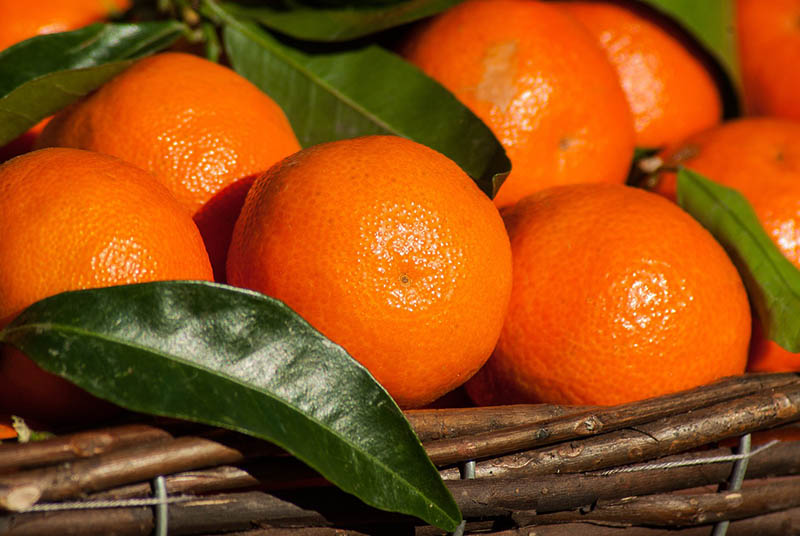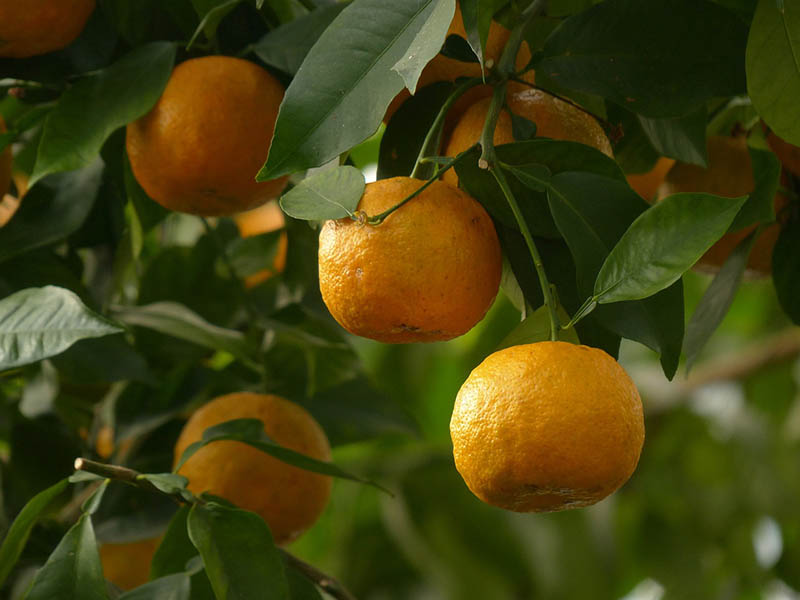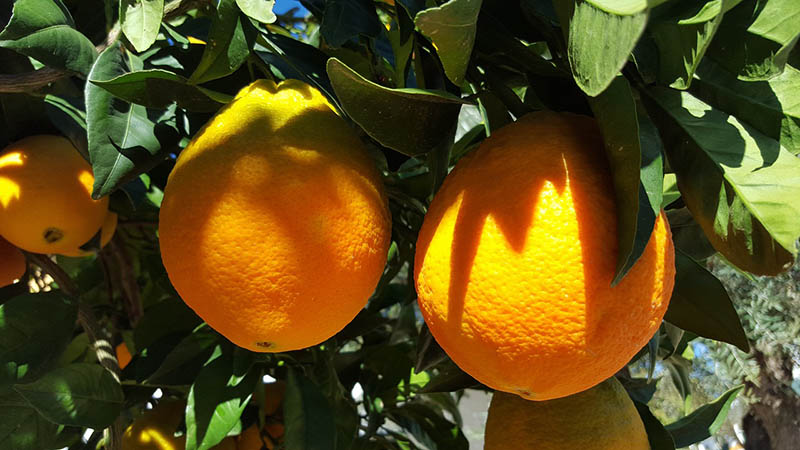10 Types of Oranges & What They’re Best For (With Pictures)
-
Codee Chessher
- Last updated:

Most people probably have a mental image of what oranges are supposed to look like, but chances are good that it’s just one of the many oranges out there. Maybe you’re thinking of the clementine, navel, or Mandarin orange. Well, there are those classics, as well as numerous other delicious oranges perfect for a wide array of culinary uses. Let’s check out some of the most popular types of oranges and what they’re used for.
The 10 Types of Oranges
1. Blood Orange

| Native to: | Mediterranean |
Blood oranges are one of the more dramatic oranges, with a deep orange peel that comes away to reveal a bloody red pulp. These oranges are a bit too sour for enjoying raw, but their unique flavor is perfect for cocktails, salad dressing, and smoothies. The signature color of the fruit is because of anthocyanin, a pigment created from unique weather patterns. Today, most blood oranges in the US are grown in California and Florida.
2. Mandarin Orange

| Native to: | China and India |
Also called clementines and tangerines, Mandarin oranges technically aren’t even —they’re considered a citrus fruit. Either way, these oranges are universally beloved as a portable snack, either eaten whole or from cans or fruit cups. They’re also seedless and ideal for desserts. To nobody’s surprise, Mandarin oranges are mainly grown in China. In the US, California grows more than anywhere else.
3. Clementine Oranges

| Native to: | China, Algeria, Spain |
Also known by their brand name in grocery stores (Cuties), clementine oranges are often confused with Mandarin oranges. Unlike Mandarins, clementines are a bit sweeter and noticeably smaller, with a lustrous orange easy-to-peel skin. Clementines are perfect for snacking whole, or you can throw them in a fruit salad or use them to bake desserts. Most clementines are grown in China, but they’re also grown in Algeria, Spain, and California.
4. Tangelo

| Native to: | Jamaica |
First grown in Jamaica during the 1930s, the tangelo is an ambitious hybrid between a tangerine and a pomelo. Tangelos are relatively rare and have a grapefruit-like bite underneath a standard tangerine sweetness. Tangelos are sometimes confused with regular oranges, but they can be distinguished by a bumpy nub on one end. Tangelos have a very versatile sweet tang that makes them ideal for eating raw or using in smoothies, mimosas, or desserts.
5. Tangerines

| Native to: | Southeast Asia |
Like several other citrus fruits, tangerines are native to Southeast Asia, where they were named for the Moroccan port city Tangier. Often confused with oranges, tangerines are actually a completely different type of citrus. Tangerines are most closely related to clementines, with the main difference between the two being that the former produces seeds. Despite that, seedless tangerines have become prevalent. Their sweet flavor is perfect for enjoying whole or in smoothies, juices, or fruit salads.
6. Seville Oranges

| Native to: | Spain |
Named after the Spanish city, Seville oranges are some of the most unique oranges out there. They look almost exactly like regular oranges but have a completely sour and bitter taste with no trace of sweetness. You’ll rarely see Seville oranges in grocery stores because most of them are used to make marmalade, where the flavor and pectin content is prized. Most of these are still grown in Spain but are exported to the UK to become marmalade.
7. Cara Cara Oranges
| Native to: | Venezuela |
First discovered in Venezuela in the 1980s, Cara Cara oranges have never become widespread despite their sweet, low acid flavor. Sometimes called red-fleshed navel oranges, Cara Cara oranges have a delicious red flesh that’s similar to both blood and navel oranges. The bright, sweet flavor of these oranges makes them perfect for making juice, smoothies, eating raw, or baking into desserts.
8. Valencia Oranges

| Native to: | Spain/California |
Valencia oranges were originally discovered in Valencia, Spain, but most Valencias today are descended from a variety grown in Southern California. These are most similar in taste to blood and navel oranges but are sweeter with less acid. Because of their low acidity, most Valencia oranges are used to create mass-market orange juice. If you’ve drank orange juice from the grocery store, it may have come from a Valencia orange.
9. Bergamot Oranges

| Native to: | Italy |
Unlike other oranges, bergamot oranges are green and have a tart, spicy flavor. Bergamot oranges are grown in smaller numbers than other varieties because most bergamot is used to flavor Earl Gray tea. It’s generally recommended to not eat these raw and to use them to flavor tea. Allegedly, bergamot oranges provide numerous health and mood benefits when used in tea.
10. Navel Oranges

| Native to: | Brazil |
First discovered as a mutated variety of orange in Brazil, navel oranges were quickly exported to California, which grows them en masse to this very day. Navels have a trademark sweet-and-sour taste that lends well to fresh juice, salads, or baked desserts like muffins. Navels are easily identified by the additional ‘belly button’ dimple.
Final Thoughts
Oranges are some of the most delicious and varied fruit out there, from the beloved clementines to the complex Seville orange. Most oranges can be enjoyed whole or go great in smoothies or juice, but a few are better for adding to other drinks or foods.
Featured Image Credit: Couleur, Pixabay
Contents
